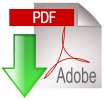| Review Article | 
|  |
IJMDC. 2025; 9(3): 756-762 Exploring the efficacy and safety of new oral anticoagulants in the management of atrial fibrillation in obese patients: a systematic reviewThamer Alhumodi Alenazi, Renad Majed A. Alqurashi, Saeed Ali Alzahrani, Abdullah Hassan A. Alzubaidi, Faisal Majed A. Alkhannani, Mohammad Abdulaziz H. Bin Oti, Mrooj Mabruk Almutairi, Noor Saeed Mahdi Abdulla Mahdi, Wala Salem Fallatah, Mohammed Faisal Saleh Alajmi. Abstract |  Download PDF Download PDF | |  Post Post | We evaluated the available evidence on the performance of non-vitamin K oral anticoagulants (NOACs) and direct oral anticoagulants (DOACs) in obese populations with AF using a total of 732 pertinent publications found after a comprehensive search across four databases. After eliminating duplicates using Rayyan QCRI and checking for relevance, we examined 87 full-text publications; finally, seven studies met the inclusion requirements. We included seven studies with a total of 68,835 AF patients, and the majority, 61,171 (88.9%) were males. DOACs and NOACs work just as well and are just as safe as warfarin in obese people with atrial fibrillation. They lower the risk of stroke and thromboembolic complications without making bleeding problems much worse. NOACs, such as apixaban and rivaroxaban, showed favorable outcomes, including improved survival rates and reduced severe bleeding risks, particularly in morbidly obese individuals. DOACs and NOACs are effective and safe alternatives to warfarin for obese patients with Atrial Fibrillation (AF), offering comparable stroke prevention and reduced bleeding risks. We support their widespread use, including in morbid obesity, but personalized approaches may be necessary for optimal outcomes. Further research on standardized obesity definitions, extreme Body Mass Index (BMI) populations, and long-term outcomes is essential to enhance anticoagulation strategies for this high-risk group.
Key words: Direct Oral Anticoagulants; Non-vitamin K Oral Anticoagulants; Atrial Fibrillation; Obesity; Morbid Obesity; Safety; Effectiveness; Systematic review.
|
|
|
|

